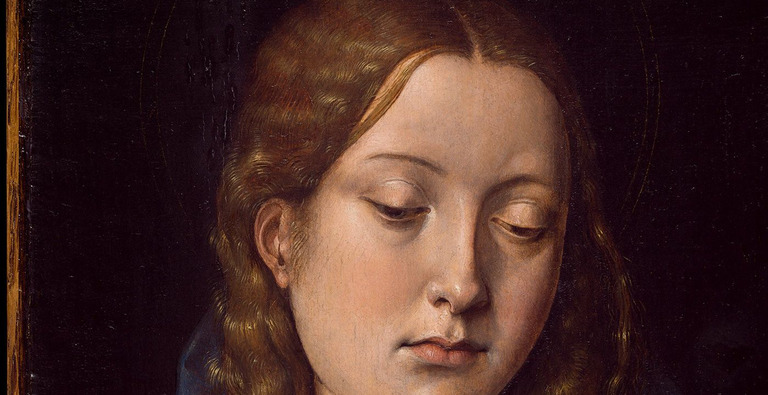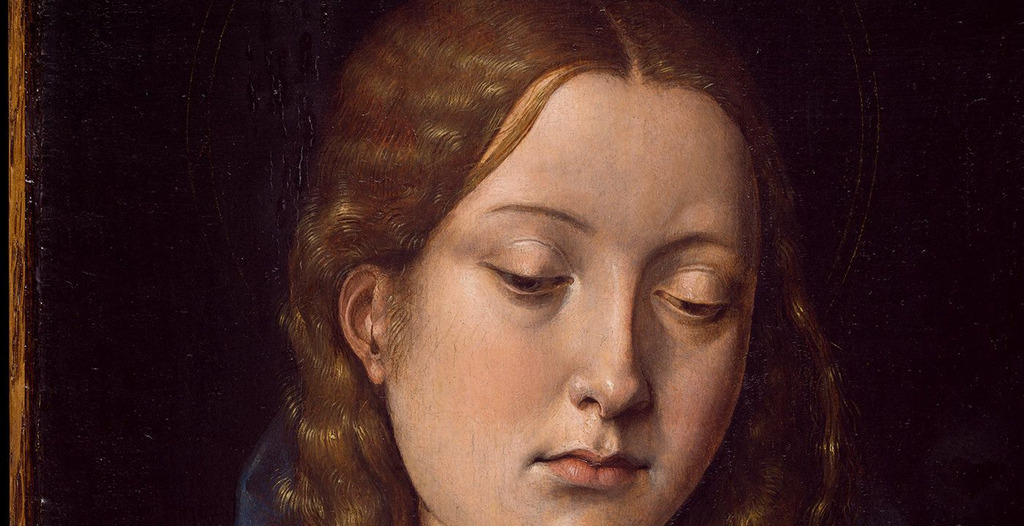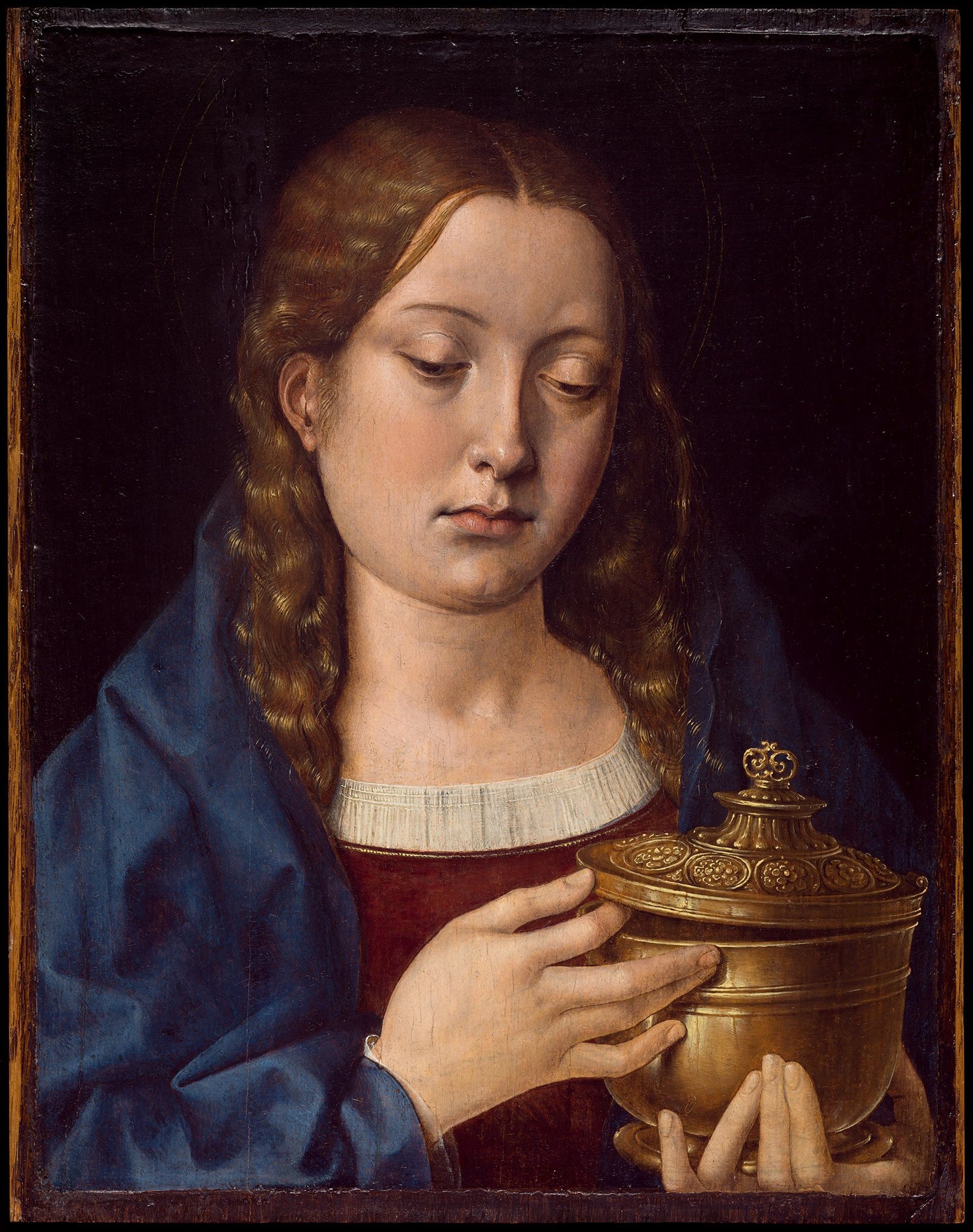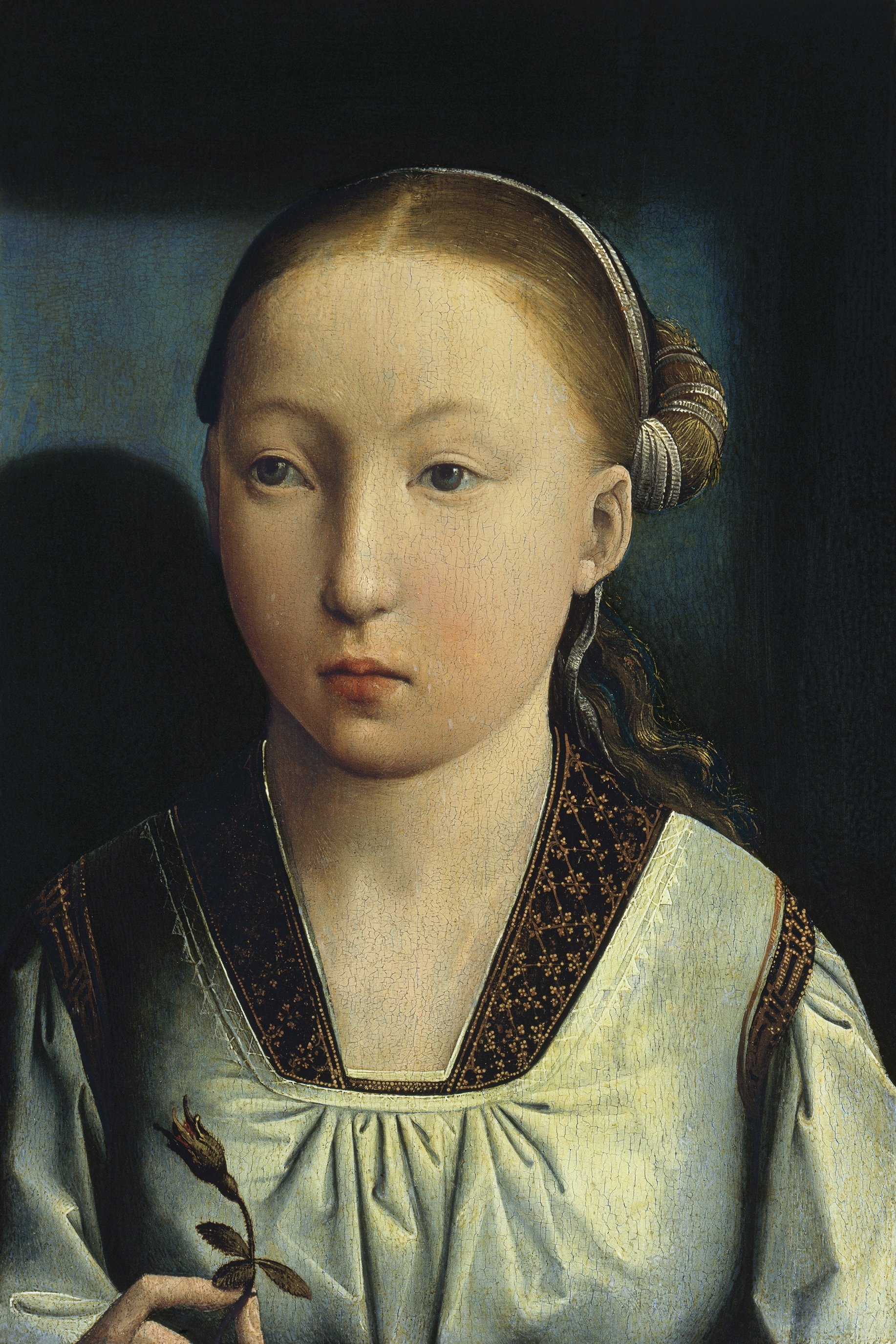Birth
January 16th, 1485
Death
January 7th, 1536
Religion
CatholicAs one of Henry VIII's wives, Catherine of Aragon was the queen of England, tending to households, lands, and estates. During her reign, she was a popular and uncontroversial queen; she patronized works on the education of women, became Europe's first female accredited ambassador (1507), joined diplomatic negotiations between England and Spain, presided over royal affairs, and prepared her daughter to rule. King Henry VIII's efforts to annul their marriage, and her subsequent resistance, forced Henry down the path to the Reformation.
Personal Information
Name(s)
Catherine of Aragon
Date and place of birth
January 15th, 1485 in Alcala de Henares, Madrid, Spain.
Date and place of death
January 7th, 1536 in Kimbolton, England.
Family
Together Isabel and Ferdinand united nearly all of modern Spain under their rule and had considerable territories in the Mediterranean, Italy, and the New World.
Mother: Her mother, Isabel of Castile (1451-1504), queen of Castile in her own right, was the daughter of Juan II of Castile and Isabel of Portugal.
Father: Catherine’s father, Ferdinand of Aragon II (1452-1516), king of Aragón, was the son of Juan II of Aragón and Juana Enriquez.
Marriage and Family Life
Catherine had one brother and three sisters. She was raised in her mother’s household alongside Maria (1482-1517), her closest sibling, until Maria left for an arranged marriage in 1500. All of Catherine’s siblings made marriages in furtherance of their parents’ diplomatic aims, and their descendants were important connections for Catherine. Her sisters Isabel (1470-1498) and Maria both married kings of Portugal. Isabel died young, but Maria was an active Portuguese queen consort to Manuel I and mother of his successor, John III. Juana (1479-1555), married in 1496 Philip of Burgundy, Habsburg heir to both the Holy Roman Emperor and through his mother, Mary of Burgundy, the wealthy and powerful Duchy of Burgundy. Catherine’s only brother, Juan (1478-1497), married Philip’s sister Marguerite of Austria, but died a few months after their marriage, in 1497.
Catherine was betrothed from the age of three to Arthur Tudor, heir to the English throne. Her wedding to Arthur in 1501 was celebrated in London with the most elaborate civic pageants and royal ceremony of the reign of Henry VII. Arthur’s death mere months into their marriage was an unexpected tragedy, and resulted in Catherine’s betrothal and eventual marriage to Arthur’s brother, the future Henry VIII, in 1509. There was some uncertainty as to whether Arthur and Catherine had consummated their marriage (Catherine’s nurse declared they had not), which would later become a matter of contention when Henry VIII sought to divorce Catherine.
Most accounts agree that Catherine and Henry had a successful, and at times loving royal marriage. They conceived at least six times, but only one child, the future Mary I of England (1516-1553), survived to adulthood. The lack of a male heir spurred Henry to seek a divorce from Catherine in the late 1520s in order to marry Anne Boleyn (c.1500-1533).
Education
Catherine’s mother oversaw her education, and Catherine and her sisters were known throughout Europe for their humanistic education, especially their knowledge of Latin. This education also included lessons in music, dance, weaving, and sewing, as well as religious instruction, languages, history, and literature. Later in life, Catherine gained recognition from humanist luminaries such as Desiderius Erasmus and Sir Thomas More for her Latinity and wisdom. As queen, Catherine was concerned with the state of learning in England, visiting and supporting colleges at Oxford and Cambridge. She also patronized works on the education of women.
Religion
Catherine was devoutly Catholic, and like her parents particularly devoted to the Order of the Observant Franciscans. Like other royal women, much of her faith was performed in public, through attendance at mass, pilgrimages, and almsgiving. She had a number of chaplains serving her, including a Spanish confessor. Although a loyal daughter of the Church, she could be critical of churchmen she perceived as corrupt, especially if they were also her political opponents, such as Cardinal Thomas Wolsey.
Transformation(s)
After Henry’s marriage to Anne Boleyn, Catherine was demoted to her former title as dowager Princess of Wales and forced to live in increasingly isolated royal manors. She was prevented from seeing her daughter Mary, who was now declared illegitimate. Catherine continued to maintain that she was England’s rightful queen until her death, although she refused to flee England or sanction any armed rebellion against her husband. She died in the company of her Spanish lady-in-waiting and dear friend Maria de Salinas Lady Willoughby, and was buried as the dowager Princess of Wales in Peterborough Cathedral.
less
Significance
Works/Agency
As queen of England, Catherine of Aragon had a significant domestic and international profile. She headed her own large household of English and Spanish servants and arranged for the marriages of her Spanish and English ladies-in-waiting. As queen consort, Catherine also oversaw the administration of her own dower lands, worth approximately £4,000, on a par with the kingdom’s wealthiest magnates. These lands provided her income to fund her household and with positions and resources to distribute as patronage. She independently governed her own estates, assisted by a council of administrators and advisors, which would also act as a court in disputes between her tenants and officials.
In the early years of her reign, she acted as a representative for her father at the English court, becoming Europe’s first female accredited ambassador in 1507. Sensing her husband’s martial enthusiasm, she urged him to go to war with France, Spain’s enemy. When Henry VIII invaded France in 1513, he put her in charge of home governance and defense, naming her Queen Regent. When James IV of Scotland invaded the north of England, Catherine sent an army north to meet him under the command of Thomas Howard, Earl of Surrey. This campaign culminated in the most significant military victory of Henry’s reign, at the Battle of Flodden Field, which resulted in the death of James IV. Ambassadors across Europe quipped that while Henry had only captured a French duke, Catherine had slain a king. Later, her political influence at court lessened as Henry turned to his former almoner Thomas Wolsey as his chief minister.
Catherine continued to be important in royal affairs, presiding over tournaments, banquets, and court spectacles, the most famous of which was the Anglo-French peace summit, the Field of Cloth of Gold, in 1520. During the latter decade of her reign, Catherine was much preoccupied with preparing her only daughter Mary to rule. This fit with her general interest in promoting education in England, and she became a patron of works on the education of women, including De institutione feminae Christianae (The Education of a Christian Woman), by Juan Luis Vives. Clearly meant for a wide audience, the work became an international bestseller and was translated into many languages. Catherine herself commissioned an English translation. Catherine personally had a hand in Mary’s early Latin education, and her daughter’s household was staffed by many of Catherine’s closest friends or their families.
Reputation
Before Henry VIII’s attempt to end their marriage, Catherine seems to have been an uncontroversial and personally popular queen. During the divorce crisis, there is some evidence that she remained personally popular, especially amongst the women of England.
Catherine’s actions in the face of personal adversity show her to be a deeply conventional elite woman who nevertheless had a strong sense of her own honor and dignity. As a young widow in England, after her first marriage, she sought to take charge of her own destiny by joining the diplomatic negotiations between England and Spain, negotiations that would determine her future. Later as an experienced queen consort, she refused to acquiesce to her husband’s demands for an annulment, in spite of mounting political and religious pressures. During both of these crises, Catherine adhered to the social expectations of her gender, casting herself as a loyal daughter, wife, and mother. Nevertheless, she did not feel that her obedience to her husband permitted him to overrule her conscience in the matter of their marriage.
Legacy and Influence
Catherine’s personal legacy and influence primarily survived through her daughter, Mary I, England’s first queen regnant. By educating her daughter to rule and instilling in her loyalties to the Catholic Church and Spain, Catherine shaped her daughter’s reign as England’s first queen regnant. Mary’s reign itself was primarily a failure, as she was unable to return England permanently to Catholicism, but most scholars agree that without Mary’s successful accession to the throne in 1553, it is unlikely that her half-sister, the future Elizabeth I, would have become queen in her own right. Particularly, Catherine’s insistence that her daughter could rule in her own right helped to pave the way for both Mary and Elizabeth to rule.
Catherine of Aragon’s other legacy is, albeit unintentional, the English Reformation. Her decision to oppose her husband’s efforts to annul their marriage ultimately forced Henry down the path to Reformation. Scholars have debated Henry’s personal beliefs and attitude towards Protestantism before the divorce, but ultimately there is little evidence that the king would have sanctioned such a radical break if he had gotten the divorce he wanted from the Vatican. Henry was unable to do so because Catherine and her dynastic connections were able to pressure the pope into delaying and ultimately denying Henry’s request for an annulment. Had Catherine acquiesced to Henry’s demands (especially before the case was appealed to Rome), in all likelihood England’s religious landscape would have been drastically different.
less
Controversies
Controversy
Catherine’s historical significance cannot be discussed without reference to her opposition to her husband’s efforts to declare their marriage invalid and obtain an annulment. Starting in 1527, Henry VIII began questioning the validity of his marriage to Catherine, because scripture specifically forbade a man from marrying his brother’s widow. Catherine and Henry had married after receiving a papal dispensation for their union, effectively negating the scriptural prohibition. Worried about his lack of a male heir, Henry expressed doubts that the pope had the power to sanction their marriage. Catherine always maintained that her first marriage to Arthur had never been consummated, and thus she believed that Henry VIII’s concerns about the pope’s ability to sanction their union were groundless. After becoming infatuated with one of Catherine’s ladies, Anne Boleyn, Henry VIII gradually sought more extreme solutions to his dynastic problems. Catherine relied on her English supporters and her nephew Charles V’s influence in Rome to block Henry’s efforts, and she passionately defended her marriage and her daughter’s legitimacy in public at Blackfriars in 1529. Catherine’s campaign was so successful that she thwarted Henry for nearly six years. Frustrated by his wife’s superior support abroad, Henry had to break away from the Catholic Church and declare himself head of the English Church in order to get the annulment he wanted, ushering in the English Reformation. In 1533, Henry had their marriage declared invalid and married Anne Boleyn.
New and unfolding information and/or interpretations
Catherine’s posthumous historical reputation was often determined by the author’s religious affiliation, though it was often difficult for Protestants to defend Henry’s actions on a personal level. For Catholic historians, Catherine became a virtuous Catholic martyr, while partisan Protestants regarded her as a woman whose marriage to Henry VIII had never been valid and whose daughter was a bastard. However, by the late seventeenth century, Catherine’s reputation had begun to solidify around the themes of dutiful wife, pious Catholic, and wronged woman. In the nineteenth century, Catherine’s reputation as a politically able wife and mother began to take shape and modern scholarship and biographies have continued to acknowledge her political acumen. However, popular culture persists in casting her as a devout, dull older woman opposite a young, vivacious (and often ruthless) Anne Boleyn.
The definitive modern account of Catherine’s life is the masterful biography written by Garrett Mattingly in 1941. In recent years, with the growth of queenship studies, Catherine of Aragon has begun to receive sustained attention by scholars of sixteenth-century Britain and Spain, although much of this work is still in its nascent stages. Continued interest in this internationally important figure will certainly produce important studies in years to come.
less
Bibliography
Primary (selected)
Bergenroth, G. A., ed., et al. Calendar of Letters, Despatches and State Papers Relating to the Negotiations Between England and Spain Preserved in the Archives of Simancas and Elsewhere. 28 vols. 1862-1954.
Brewer, J. S., J. Gairdner, and R. H. Brodie, eds. Letters and Papers, Foreign and Domestic, of the Reign of Henry VIII, 1509-1547. 21 vols. and addenda vols. 1862.
Ellis, Henry, ed. Original Letters, Illustrative of English History; Including Numerous Royal Letters; from Autographs in the British Museum, and One or Two Other Collections. Vol. 1. 1824.
Green, Mary Anne Everett, ed. Letters of Royal and Illustrious Ladies of Great Britain, from the Commencement of the Twelfth Century to the Close of the Reign of Queen Mary. Vol. 1. 1846.
Kipling, Gordon, ed. The Receyt of the Ladie Kateryne. Oxford: Oxford University Press, 1990.
Vives, Juan Luis. The Education of a Christian Woman: A Sixteenth-Century Manual. Edited by Charles Fantazzi. Chicago: University of Chicago Press, 2000.
Archival resources
England: The National Archives, Kew; British Library, London
Spain: Archivo General de Simancas
Belgium: The National Archives, Brussels
State Archives of Austria, Vienna
Selected Recent Scholarship
Earenfight, Theresa. ‘Raising Infanta Catalina de Aragón to Be Catherine Queen of England’. Anuario de Estudios Medievales xlvi, no. 1 (2016): 417–43.
———. ‘Regarding Catherine of Aragon’. In Scholars and Poets Talk about Queens, edited by Carole Levin and Christine Stewart-Nuñez, 137–57. New York: Palgrave Macmillan, 2015.
Hayward, Maria. ‘Spanish Princess or Queen of England? The Image, Identity, and Influence of Catherine of Aragon at the Courts of Henry VII and Henry VIII’. In Spanish Fashion at the Courts of Early Modern Europe, edited by José Luis Colomer and Amalia Descalzo, 11–36. Confluencias. Madrid: Centro de Estudios Europa Hispánica, 2014.
Mattingly, Garrett. Catherine of Aragon. New York: Random House, 1941.
Web resources (selected)
Many of the calendars and some manuscripts cited above have been digitized and are available online:
Hathitrust < https://www.hathitrust.org/>
State Papers Online < http://gale.cengage.co.uk/state-papers-online-15091714.aspx>
Medieval and Early Modern Sources Online < https://tannerritchie.com/memso.php>
The British library has also digitized some manuscripts associated with Henry VIII and Catherine of Aragon, for example: Add MS 21481
The Early Modern Map of London: http://mapoflondon.uvic.ca/mapoflondon/index.htm





Comment
Your message was sent successfully